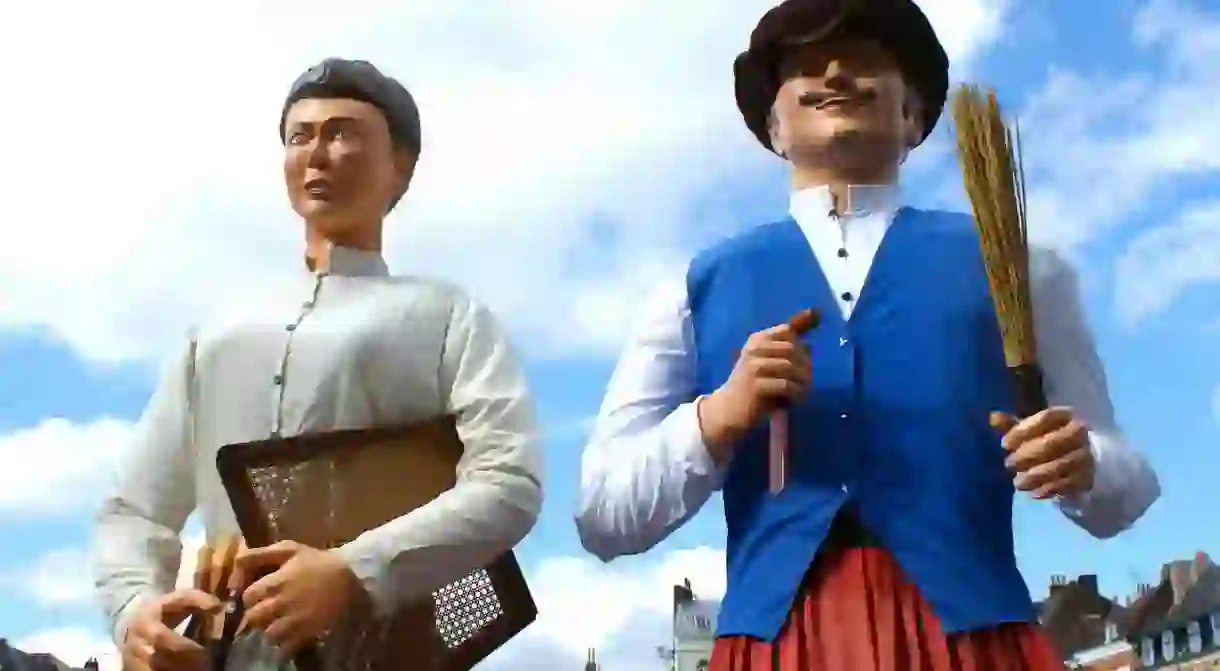France's Giant Puppet Parades and Where to See Them

A tradition in Northern France since the 16th century, these larger-than-life characters are baptized, get married and have children. Meet the Giants of the North, inscribed by UNESCO as Intangible Cultural Heritage of Humanity.
The Gayants de Douai
According to local lore, in fear of attacks by invaders in the 9th century, the residents of Douai asked of their lord, Jehan Gelon, to protect them. Gelon told them that in case of an attack, they should take shelter in the tower and wait for him. When the city was besieged by the Normans, Jehan Gelon and his three sons appeared as if by magic (a connecting tunnel was later discovered). They boldly repelled the attack, although they would later lose their lives in battle.
In the 16th century, the inhabitants of Douai made a giant in honor of their brave lord, and it became the symbol of the town. These days, Gayant (Picard speak for giant), his wife Marie Cagenon, and their three sons, Jacquot, Fillon et Binbin, come out on parade once a year, during the Fêtes de Gayant in early July.

Origins
The Hauts-de-France region is home to over 300 giants in different cities, representing fictional heroes, historical figures and some animals. They come out on their specific fête day, and on special occasions such as Easter, summer festivals, and on rare occasions for special heritage celebrations. Giants are treated as people – they are not made, they are ‘born’ and baptized, and they even marry and have children.
The origin of the giants is fuzzy. At the time of their first appearance in Douai in the 16th century, the North of France was under Spanish rule, part of the Países Bajos Españoles, a culture where they also have giant silent figures on religious and ceremonial parades. Who influenced whom? Historians are not quite in agreement on this one, which only adds to the eerie mystique of the giants, given the fact they are only seen on rare occasions.
Beside Douai, other famous giants include Reuze Papa and Reuze Maman in Cassel, Martin and Martine in Cambrai, Binbin in Valenciennes, Bimberlot in Le Quesnoy, Gargantua in Bailleul. These days, the figures have mostly been stripped of their religious symbolism.

Living heritage
The know-how behind the quirky tradition is passed on from generation to generation. In a first for France, in 2015 the Géants of Douai and Cassel were designated as UNESCO Intangible Cultural Heritage of Humanity.
In Douai, the position of Gayant-bearer is handed down from father to son or son-in-law, recruited from the age of 18, resulting in an extended family of 53 members. The carrying device and superstructure is made of wicker by the gild of basket weavers, and carried by up to six specially trained bearers, as the entire giant can end up being six or even eight meters high, and weighing well over 100 kilos. The bearers are highly skilled at bringing the giants alive during the parade, acting out historical scenes, merrily dancing, and interacting with the public and with the other giants.
The parades are not just a display of the figures, but also a venue to showcase local arts, crafts, music and gastronomy, and generally have a rollicking good time.














